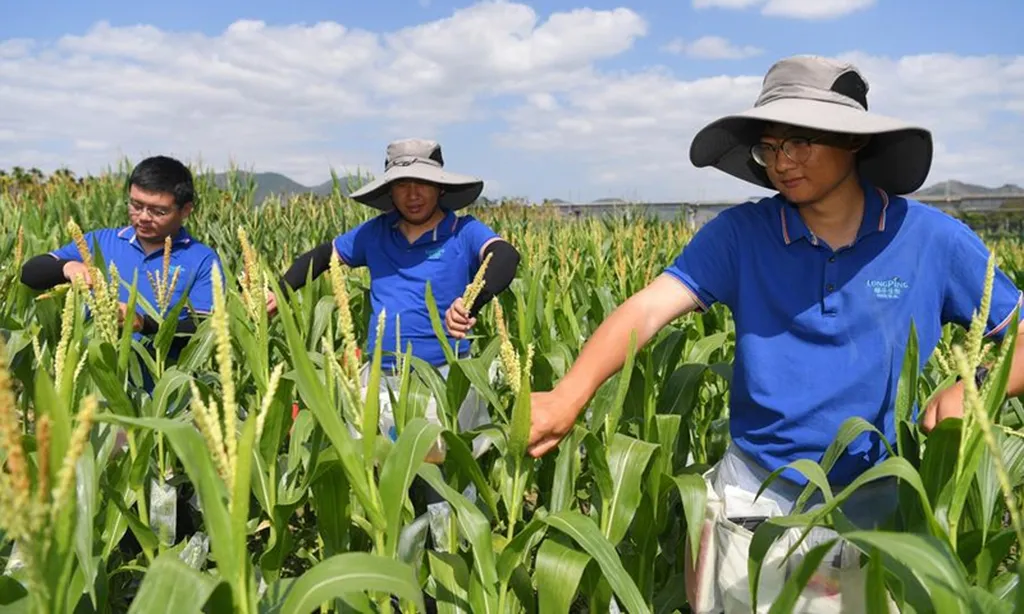In the heart of China, a team of researchers from the College of Information at Xi’an University of Finance and Economics, led by Dr. Wang Yi, has developed a groundbreaking model that could revolutionize the way we monitor and predict maize growth. Their work, published in the journal *智慧农业* (translated as *Smart Agriculture*), focuses on estimating maize aboveground biomass (AGB), a critical indicator for evaluating crop growth status and ensuring food security.
Maize, one of the most widely cultivated staple crops worldwide, is subject to complex spatial and temporal variations influenced by a multitude of dynamic factors. Traditional methods of estimating maize AGB have relied heavily on single-source remote sensing data and conventional machine learning algorithms, which often fall short in accuracy and generalizability. Dr. Wang Yi and his team sought to overcome these limitations by integrating convolutional neural networks (CNN), long short-term memory networks (LSTM), and a self-attention (SA) mechanism into a single model architecture.
The team’s innovative approach leverages the feature extraction capabilities of CNN, the temporal modeling strength of LSTM, and the dynamic attention mechanism of SA to enhance the accuracy of maize AGB estimation from a spatiotemporal perspective. “Our model not only reduces estimation errors but also improves model interpretability,” said Dr. Wang Yi, the lead author of the study. “This research could provide valuable insights and references for the dynamic modeling of crop AGB.”
The model was trained using vegetation indices, crop parameters, and meteorological data collected under varying gradient water treatments in the experimental area. The results were impressive, with the CNN-LSTM-SA model achieving a coefficient of determination (R2) of 0.92, a root mean square error (RMSE) of 107.53 g/m2, and a mean absolute error (MAE) of 55.19 g/m2. These metrics outperform traditional models like random forest (RF) and support vector machine (SVM), demonstrating the superior accuracy and consistency of the new approach.
The implications of this research extend beyond the agricultural sector. In the energy sector, where biomass is a crucial component of biofuels and renewable energy sources, accurate estimation of maize AGB can lead to better resource management and improved energy production efficiency. “Understanding the growth patterns and biomass potential of maize can help energy companies make informed decisions about biomass procurement and processing,” said Dr. Xue Rong, a co-author of the study.
The study also highlights the importance of multi-source data integration and feature selection in improving model performance. By using recursive feature elimination (RFE) and local interpretable model-agnostic explanations (LIME), the researchers were able to optimize the model’s input features and interpret individual samples more effectively.
As the world grapples with the challenges of climate change and food security, innovative research like this offers a glimmer of hope. By harnessing the power of advanced machine learning techniques, we can gain deeper insights into crop growth dynamics and make more informed decisions about resource management and energy production. The work of Dr. Wang Yi and his team is a testament to the potential of agritech to drive positive change in the world.
Published in the journal *智慧农业*, this research not only advances our understanding of maize growth dynamics but also paves the way for future developments in the field of smart agriculture. As we look to the future, the integration of advanced technologies like CNN, LSTM, and SA mechanisms will undoubtedly play a pivotal role in shaping the next generation of agricultural and energy solutions.

